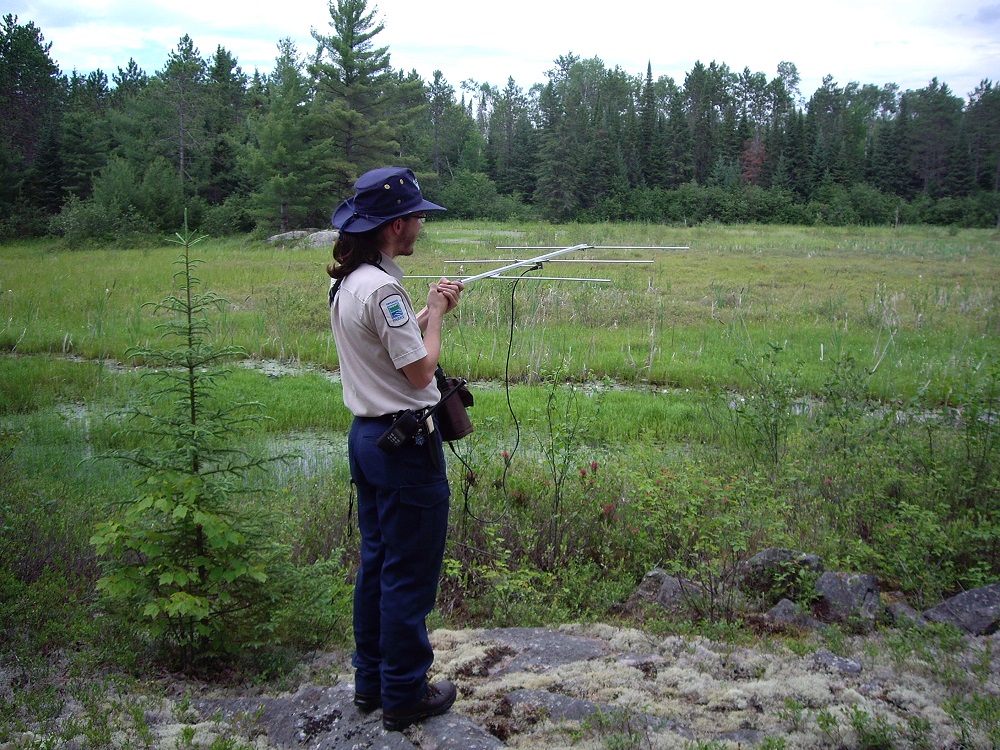Today’s post comes from Jessica Stillman, school outreach coordinator at Bronte Creek Provincial Park.
What do a Polar Bear, a Prickly Pear Cactus, a Five-lined Skink, and a Bobolink all have in common?
Aside from their snazzy names, they’re plants and animals that require unique environments to survive. Some of these special spaces have been changing and disappearing throughout history.
That’s where Ontario Parks comes in. We protect important landscapes, and conduct research on how we can ensure the species living in parks can thrive.
This year, we’re excited to share the science of parks during Science Literacy Week.
The science of protection
With over 330 provincial parks spread across the province, Ontario Parks protects a diverse range of climates.

From as far north as the shores of Hudson Bay to the southern tip of Ontario, we protect climatic zones with harsh winters, mild rainy seasons, heatwaves, and snowstorms.
These protected climates influence the plants and animals that live within them, producing the diverse range of habitats and iconic landscapes we have grown to associate with our bountiful parks system.
To better understand the relationship between an area’s climate and the species within it, park staff have conducted research and monitoring projects for decades.

These projects deepen our understanding of protected areas. The ingenuity of our scientists and the impactful discoveries they make shape each park’s story of protection.
Even if the science happening inside a park isn’t obvious, believe us, it’s there!
What is Science Literacy Week?
#SciLitWeek showcases the diversity of Canadian science and how it is shaping our lives. This year, it’s taking place from September 20 to 26.

It gives museums, libraries, science centres, schools, not-for-profits, and parks the opportunity to come together to highlight our unique relationships with science.
This year’s #SciLitWeek’s theme is “C is for climate.” If you haven’t figured it out already, Ontario Parks is gearing up to share stories about our unique climates with you.
How can I participate?
Our Discovery staff have curated some amazing Science Literacy Week activities.
Whether you’re learning from a classroom or from home, we can’t wait to share stories of Ontario’s fascinating landscapes.
We’re excited to be offering two live events:
30-45 minutes. September 21, 2021 at 1:00 p.m.
The wandering Bronte Creek continues to cut a ravine into the Queenston Shale, creating different slopes and cliffside orientations along it.
These generate a variety of microclimates along the ravine allowing for specialized plants and animals to find homes.
Join us virtually in Bronte Creek Provincial Park for a look at these amazing microclimates and the species that live within them!
30 minutes. September 23, 2021 at 1:00 p.m.
The freshwater sand dunes of Pinery Provincial Park are a rare and incredible habitat.
The climate here is intense, so the plants and animals have adapted to live in conditions similar to a desert.
Join us to discover how they are able to survive.
Can’t join us live? Both programs will be available on Pinery and Bronte Creek‘s Facebook pages afterwards.
Exploring on your own?
Search for Ontario Parks on the Science Literacy Week website to see our suggested self-guided activities.
Science Literacy Week may only be once a year, but science never sleeps!
There are lots of different ways you can help the science initiatives happening in parks near you.
Submitting wildlife sightings to park staff, volunteering with park projects, or participating in self-use monitoring programs like Pinery’s Photomon stations or bat detector programs are all great ways you can help contribute to science in parks.

We can’t forget one of our favourite ways visitors can engage in community science: iNaturalist!
Spot something cool? Submit your sightings on the app to be identified. Your observations help park staff better understand the park’s biodiversity and the location of critical habitats.
Let’s share some science!
Science is everywhere. This Science Literacy Week, let’s learn about it!
Whether you tune into one of our workshops or learn on your own, we hope you’ll take the time to learn a little more about our protected areas.

Sharing your park science story? Be sure to tag us in your #SciLitWeek learning using @OntarioParks.




